Exotic rocks, stones, and mineral chunks are a valuable and often underused creative element for terrariums.
The striking features and dynamic shapes created by these solid materials can bring a terrarium to life and offer unique planting opportunities when used effectively.
Whether you want a towering rugged spike, a black monolith, or a mossy mountain – there’s a type of terrarium rock that’s a perfect fit.
Trust me; you won’t need to be a geology nut to appreciate these exotic beauties.
Ready to see them?
In the immortal words of everyone’s favorite rock chick, Avril Lavigne, let’s rock oot. 🤘
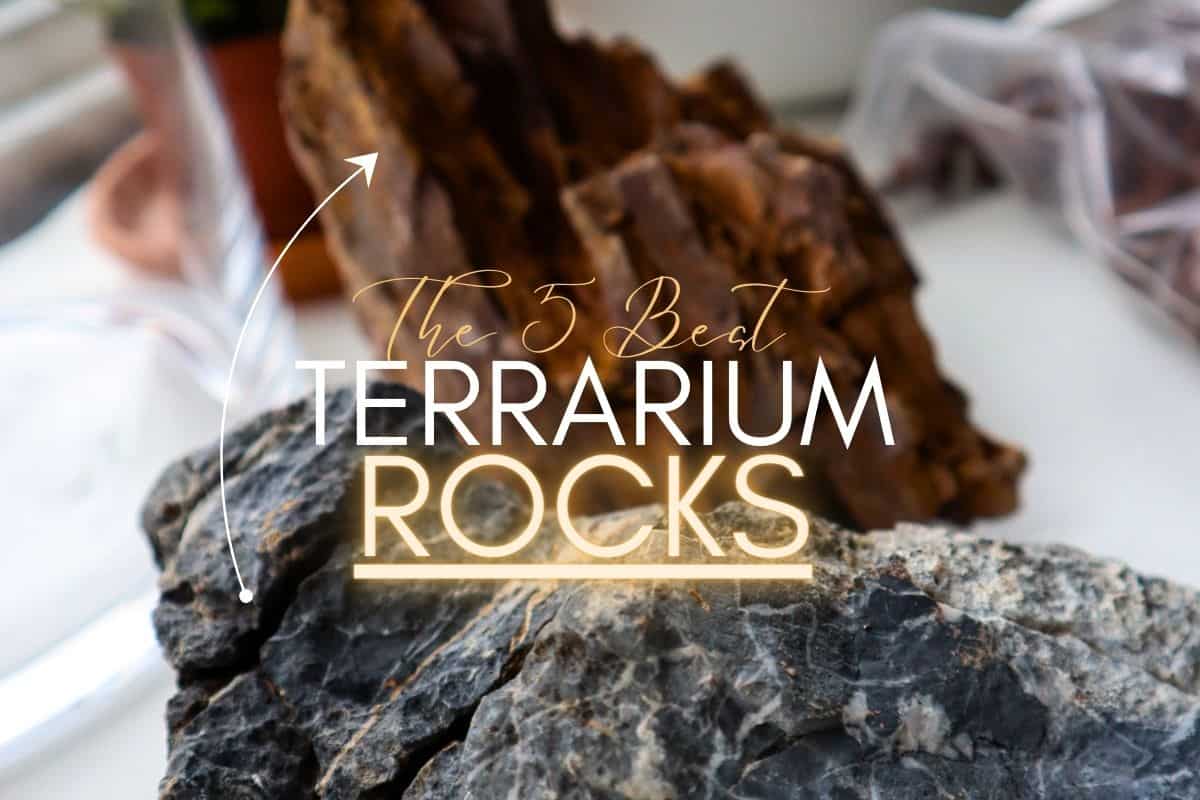
Terrarium Tribe is reader-supported. When you purchase through links on our site, we may earn an affiliate commission (at no further cost to you). 💜
Why Choose These Aquascaping Rocks for Terrariums?
If you’ve not encountered aquascaping before (firstly, you’re welcome), it’s essentially the art of scaping aquariums into gorgeous natural scenes.

So, as professional artists, the scapers (sp?) take their hardscape seriously, and they’ve found a selection of wood and rock types that hold a variety of advantages over standard pieces.
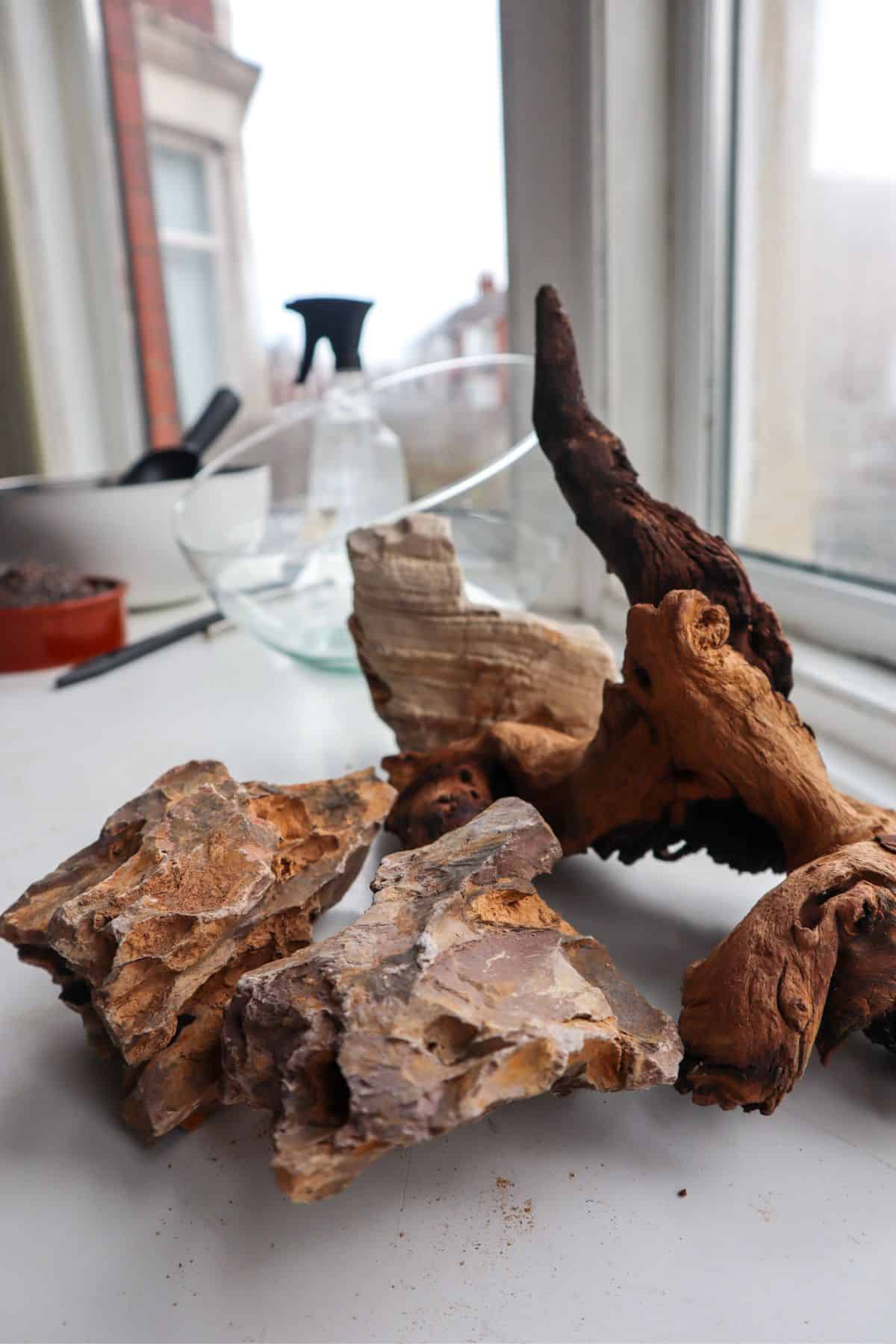
These days there are lots of different aquascaping rock types, but they all tend to share a few key features that providethe same benefits to terrariums.
- Lightweight – so they aren’t going to break your glass container, and they’re easy to place/manage.
- Unique – these aren’t your run-of-the-mill rocks. Each brings great contrast and beauty to a terrarium scene – expanding your creative options.
- Textured – which, besides looking great, makes for fun 3D planting opportunities as you can place moss and epiphytic plants in the crevices.
Alright, let’s see them!
My Favourite Terrarium Rocks for Sale
1 | Dragon Stone (Ohko Stone)
Honestly, dragon stone is every bit as cool as it sounds. It’s found primarily in Japan, so it also goes by the name “Ohko stone,” which is arguably even cooler.
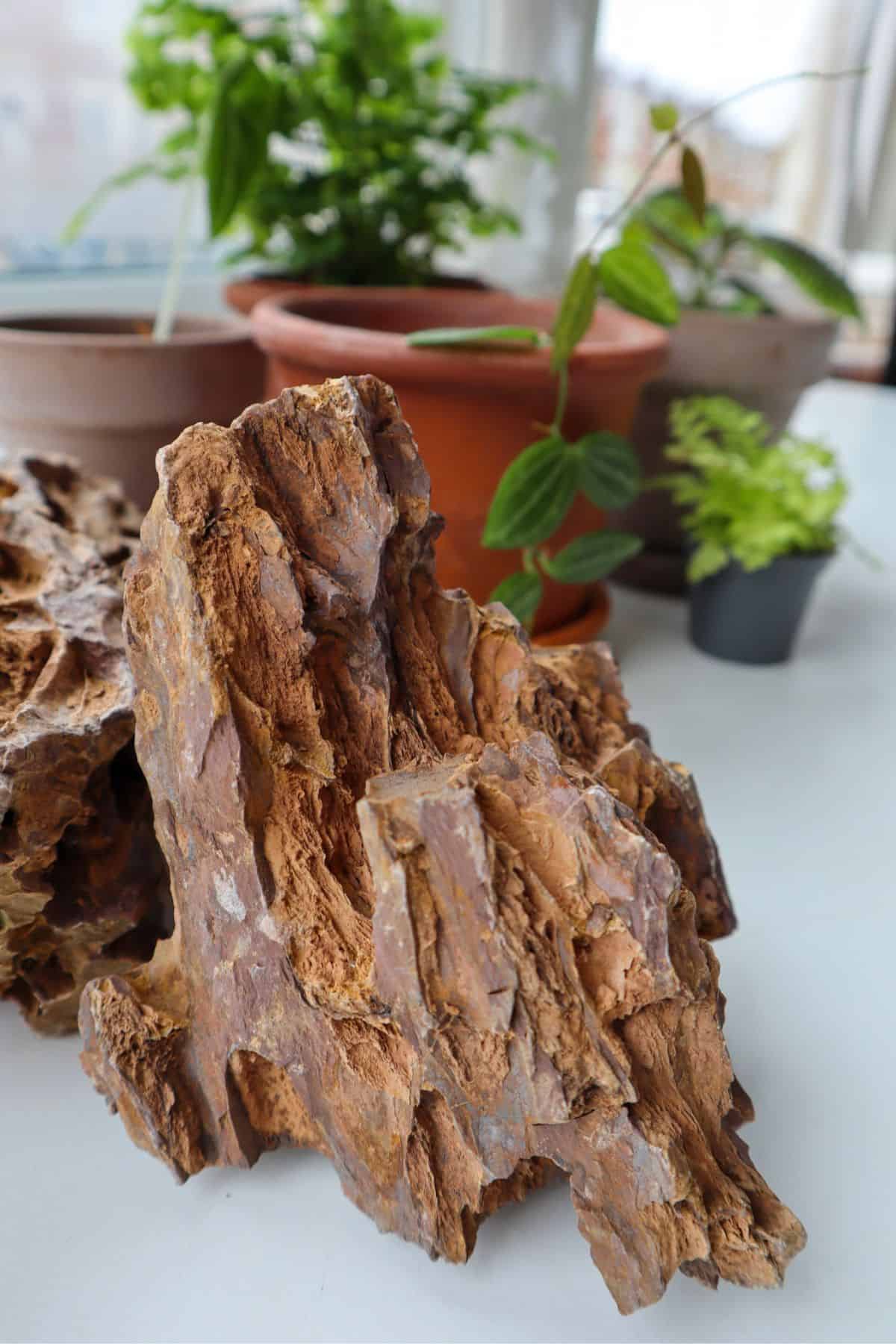
It’s extremely lightweight, making it great for building cave-like structures, and the form provides lots of nooks to plant in so you can easily bring it to life.
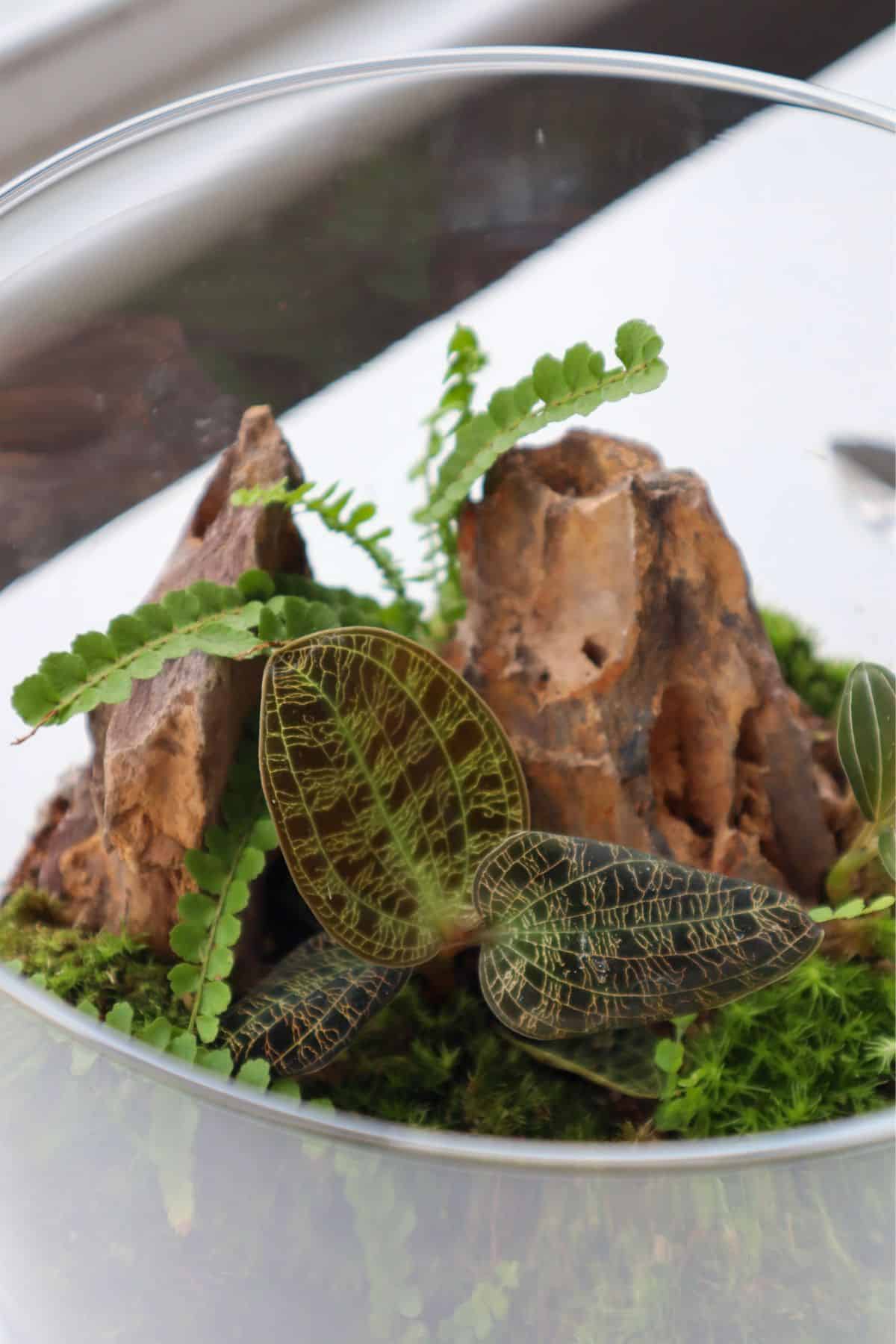
Due to its sedimentary makeup, it can be quite brittle, but not so much that it’s likely to break up accidentally.
It works in your favor, though; dragon stone chunks tend to be long and sharp, and this brittleness makes it much easier to break into smaller chunks to sculpt to your desired shape.
👉 Shop Dragon Stone on our online store.
2 | Seiryu Stone (Mini Landscape Rock)
Next up, another dragon-themed terrarium rock hailing from Japan: seiryu stone. A gorgeous stone with a jagged structure, striking calcite veins, and a blueish tint, which inspired the name.
In the Japanese belief system, Seiryū, the “azure dragon,” is one of the four guardian deities of the country.
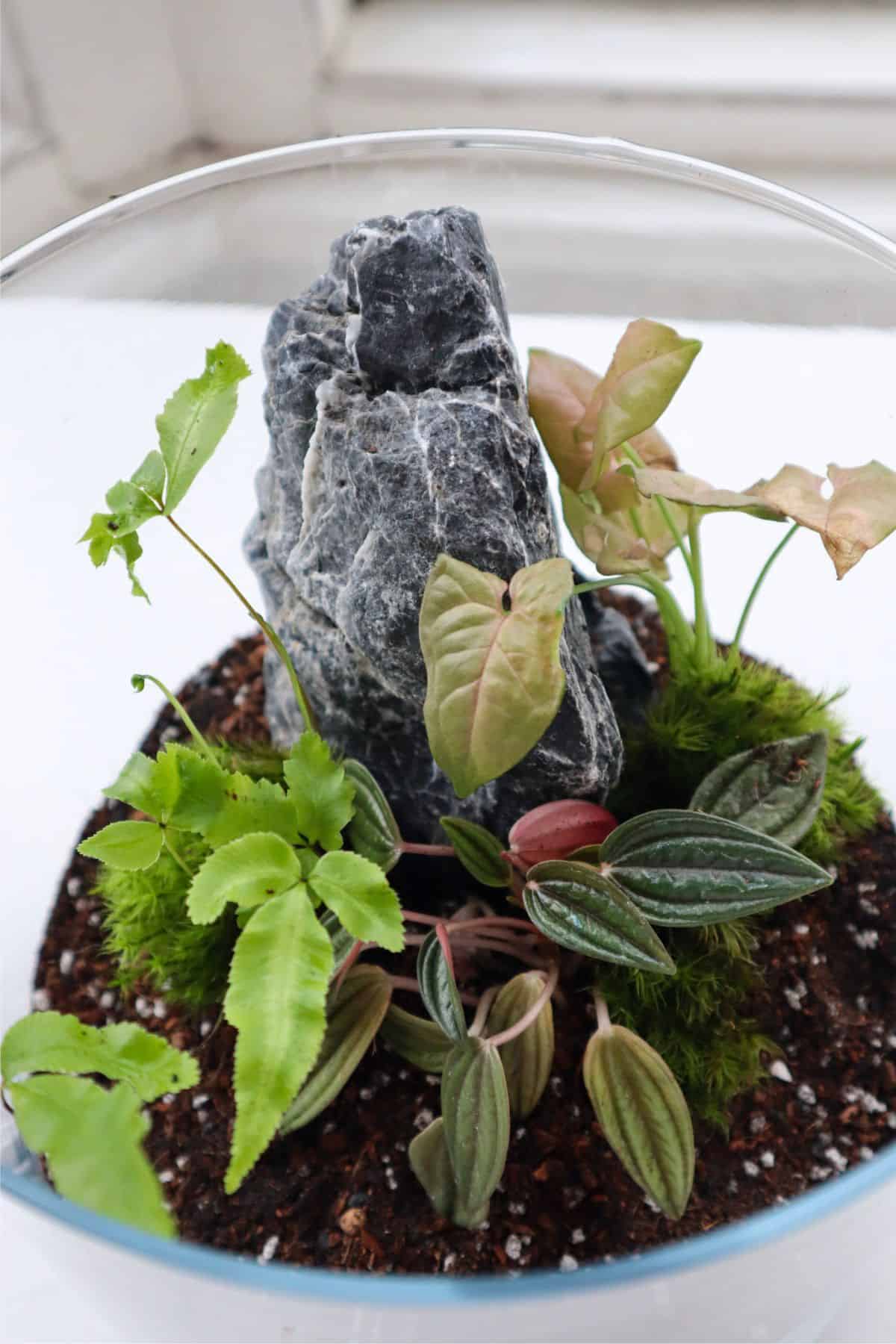
With seiryu stone being pretty tough, you’re best off trying to get an assortment of shapes and sizes. Breaking up a chunk to size is going to be almost impossible.
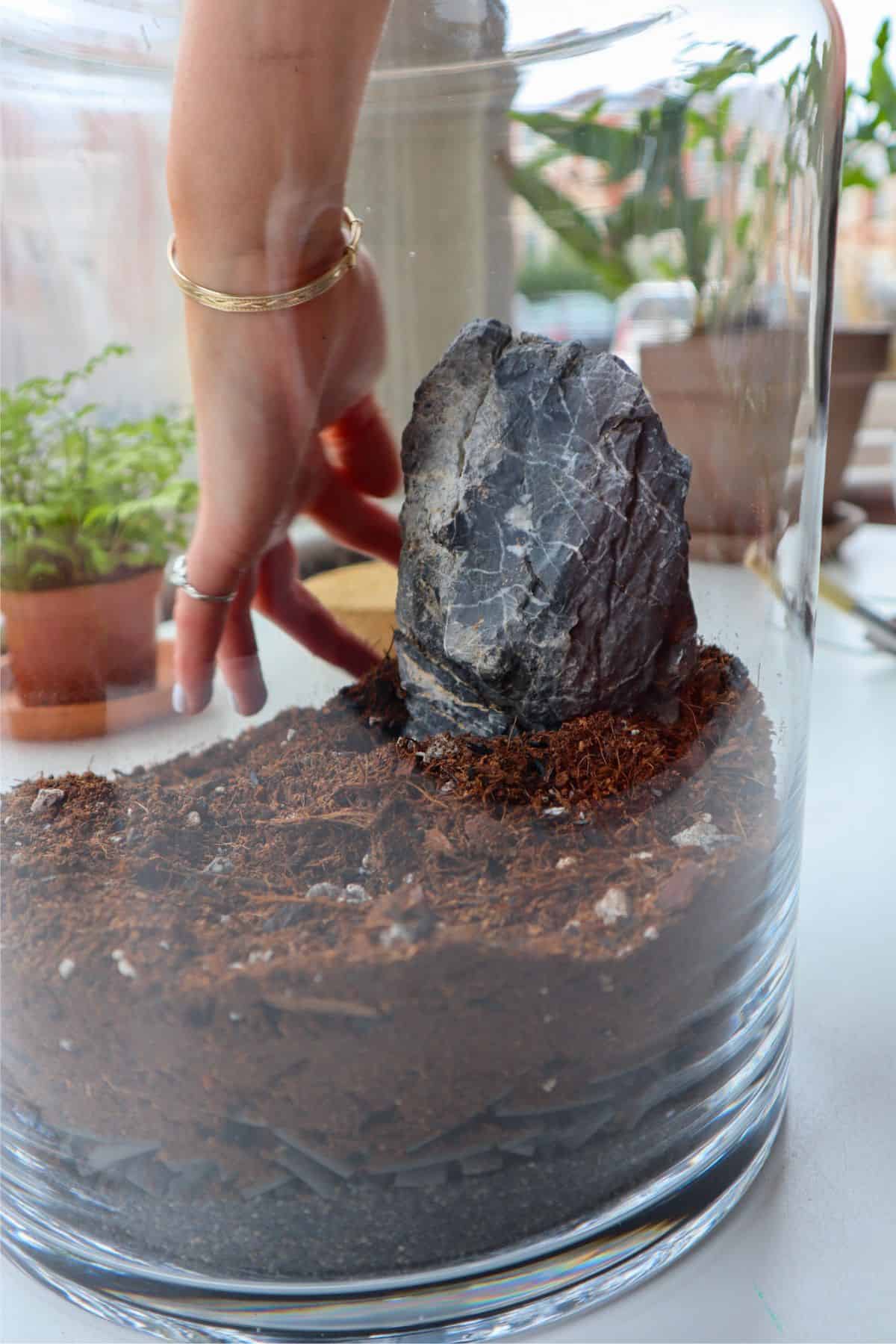
👉 You can pick some seiryu stone from Buceplant or Etsy.
3 | Lava Stone / Lava Rock
Lava stone is objectively less visually striking than the others, but its unique properties make it very useful in terrariums.
It’s highly porous, meaning it can hold/transfer water to any plants and mosses that have been rooted in it. Meaning lava rock can be used creatively to build living structures without the need for damp moss deposits.

Of course, you don’t have to work with epiphytes to utilize lava rock in a terrarium; most terrarium environments can benefit from the added water retention and distribution.

👉 Shop lava rock on Buceplant.
4 | Gobi Desert Stone
This sand-toned rock from the Gobi Desert in China brings effortless scale to a terrarium or vivarium build.
Unlike some others on this list, gobi desert stone doesn’t have nooks and crannies for creative planting; instead, it works best as a monolithic backdrop to help your plants pop.
It has a fantastic layered texture, with shades of cream overlapping to create a lot of complexity in a small rock.
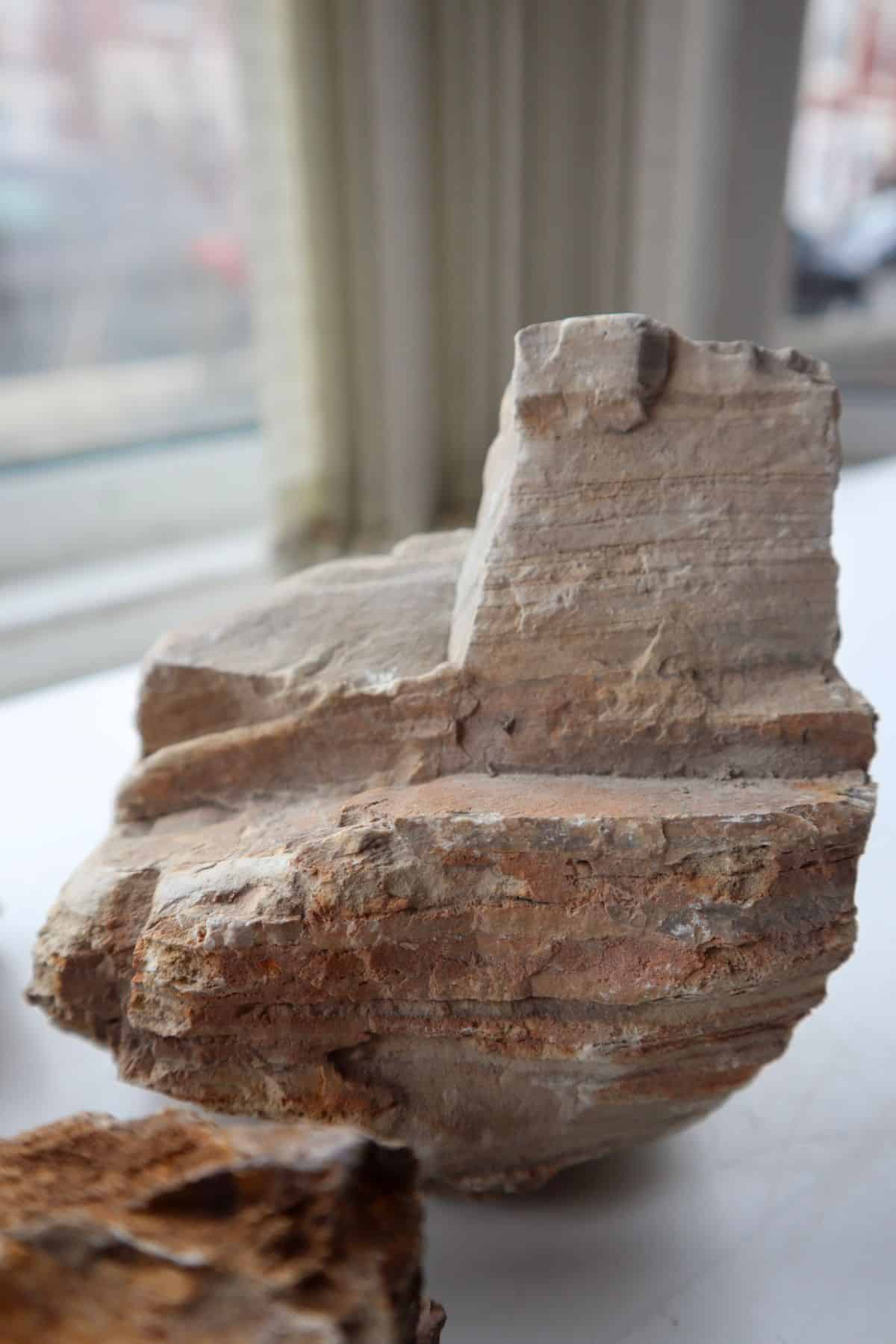
Because of this, I’d be careful to buy a piece the right size for your project; breaking it down into smaller pieces is not only a challenge, but you’d likely ruin the look.
👉 Grab a piece of gobi stone for your next build from Buceplant.
5 | Samurai Stone
Last but not least, we have yet another Japanese stone (at least in name), and it’s one I’m desperate to try out for myself.
Samurai stone is a stunning rusty-red rock, mottled with bright white streaks throughout.
This marbling and texture make it an ideal choice for terrariums with scale. For best results, use it as a monolithic mountain and pair with tiny accent plants to let it really shine.

The deep, warm hues are begging for some bright green plants to frame it.
That’s the End of the Rock Show!
From what I’ve come across, these are far from the only cool terrarium rocks available. I also really like pagoda stone, maple leaf stone, and fire stone, to name but a few – but which is your favorite? Let me know in the comments!
Looking for an encore? Check out our post on terrarium wood.

I am so thrilled to have found your site, it is the perfect resource I have been searching for. And I love your enthusiasm for all-things terrarium. Finally finally I have found someone talking about rocks!
Pagoda Rock is what I am going to use, thank you.
Welcome! Terrarium Tribe is a safe space to talk about rocks 😂
This is absolutely what I needed to find! I am wanting to start doing terrariums and this is a great article to help me get started. Thank you!
I found petrified rock that looks like interesting wood, without the wood problems. Try a rock or mineral club or show near you. Thanks.
Thank you very much for your site, I found so much useful information and inspiration here. You did a great job, this is really very cool, thank you :3